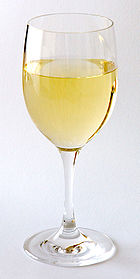The SCD Diet and Alcohol: Part II… SCD Legal Wine Guide

In Part I of this series we discussed alcohol’s effects on our digestive systems and I gave a listing of legal and Illegal alcohol types. Of the types of legal alcohols they can be broken down into wines and liquors. In this post, we will learn all about wines and how someone on the SCD diet can identify which wines to drink to minimize damage to the digestive system. For Part III go here.
About Wine
Wine is made from grapes (keeping it simple) that are crushed and then fermented using different kinds of added yeast. The yeast eats the natural sugars from the grapes and converts them to ethanol alcohol. The fermentation process can stop naturally when the yeast consumes as much of the sugar as it can or it can be stopped prematurely to allow more sugar to remain in the wine. Wine is usually classified as “Dry” or “Sweet” based on how much sugar is left in the wine. This residual sugar amount is usually measured in grams of sugar per liter of wine. There will always be some amount of sugar left in the wine as grapes contain some sugars that are unfermentable.
Classifying Sweetness of Wine
The level of dryness in wines seems to be a bit unclear. My research consistently showed that any wine with over 45 grams of sugar per liter (45 g/l) is considered sweet. That would lend one to believe that any wine under this amount is considered dry and therefore SCD legal. This is where the research and definitions of wine tends to get a bit muddy.
While the amount of sugar left in wine is measured in grams per liter it is usually expressed in a residual sugar percentage (RS %). The sweet wine level that measured 45g/l would therefore give 4.5% on the residual sugar scale. Here’s a very nice table of the ranges of residual sugar and their appropriate dryness levels. It is important to note that a dry wine, as defined by residual sugar content, can taste sweet and a sweet wine can actually taste dry. This can be a result of any number of factors during the winemaking process.
So, What Can I Drink?
From all the research I’ve done, it appears the conservative approach for SCD’ers is to drink only wine that is below 1% RS (sometimes referred to as extra dry).
So, how do I pick a wine at the store? That is a great question… I’ve found it only gets more confusing from here.
The primary problem is that wine manufactures aren’t forced to list the RS percentage (or sugar content) on their labels. Until recently, this left SCD’ers trying to make educated guesses based on names. But these lists could only work as broad guidelines, as any wine can be either sweet or dry.
Dry Red Wines: Merlot, Zinfandel, Cabernet Sauvignon, Pinot Noir, Bordeaux, Syrah
Dry White Wines: Sauvignon Blanc, Chardonnay, Pinot Grigio, Riesling, Brut or Extra Brut Champagne
Illegal Sweet Wines: White Zinfandel, Late Harvest Wines (usually Riesling), Ice Wines, Sec or Demi-Sec or Doux Champagne, Port, Sherry
This is just enough information to be dangerous when buying wine.
My old technique was to choose a table wine that is usually drier (see table above) and then confirm with someone working in the wine section that it is indeed a dry or extra dry wine. I’d make sure I read the labels and verified that it was supposed to be served with food. While I was never afraid to ask, I found that the employees of the store rarely had a good idea as to the level of dryness of any wine that I asked about.
Sugar Isn’t The Only Issue
But it isn’t JUST sugar you need to look out for when selecting a wine – both red and white wines are potentially full of additives (that’s because the USDA allows 76 additives to be added by manufacturers to red wine to make it taste and look “better”).
These additives range from things like purple food coloring to added yeasts to aid the fermentation process and sugar to increase the alcohol content. Even SAWDUST can be added to create an “oak-y” flavor.
And because the USDA doesn’t regulate the additives, ingredient lists (they have to protect “trade secrets” after all) or even the alcohol content – spending more on an expensive bottle, buying a bottle described as “dry,” or choosing a lower listed ACV percentage does NOT guarantee a better choice.
High-sugar, high-alcohol wines leave me feeling groggy and hung-over – even just 1 or 2 glasses. We already know that sugar, artificial flavors and colors, and preservatives like sulfites in food can cause flares, achy joints, itchy skin, and brain fog – they can do the same thing when they are in wine.
How to Pick a Gut-Safe Wine
I don’t mess around in the liquor store trying to guess which wines might be safe for my gut anymore. Instead, I leave it to the experts at Dry Farm Wines.
Dry Farm Wines is a wine subscription that takes all the guesswork out of choosing the best wine for your health – meaning every wine from the company is lab-certified to be low in sugar, low in alcohol, low in sulfites, and additive, mold, and preservative free. They’re also organic or naturally farmed (without irrigation) and come from old-growth vines – meaning they taste better and are better for the planet.
Each bottle from Dry Farm is hand-selected and tested to:
- Not exceed 12.5% alcohol (standard wine can have up to 24%!)
- Have less than 75 PPM added sulfites (can be up to 350 ppm in standard wine)
- Have less than 1 gram/L total sugar (not regulated in standard wines)
- Have less than 2 PPM of the mold ochratoxin (not regulated or even tested in standard wines!)
Being low in sugar and alcohol, and being mold, mycotoxin and sulfite free means – most importantly – that you won’t feel tired, groggy, puffy or “hungover” the next day if you enjoy a glass.
Jordan and I are loving our monthly delivery of Dry Farm Wines – and we know you will too. If you want to give it a try, or serve it at your next dinner party, you can get a bottle for just a penny when you sign up for a monthly or bi-monthly membership! Check it out here ? dryfarmwines.com/scdlifestyle
Check out the last part of this series, as I dive into the world of distilled liquors. Anyone have any other wine selection recommendations?
-Steve
Did You Like this Article?
Subscribe to our newsletter to receive email notifications, some ways to find relief, and next steps.
